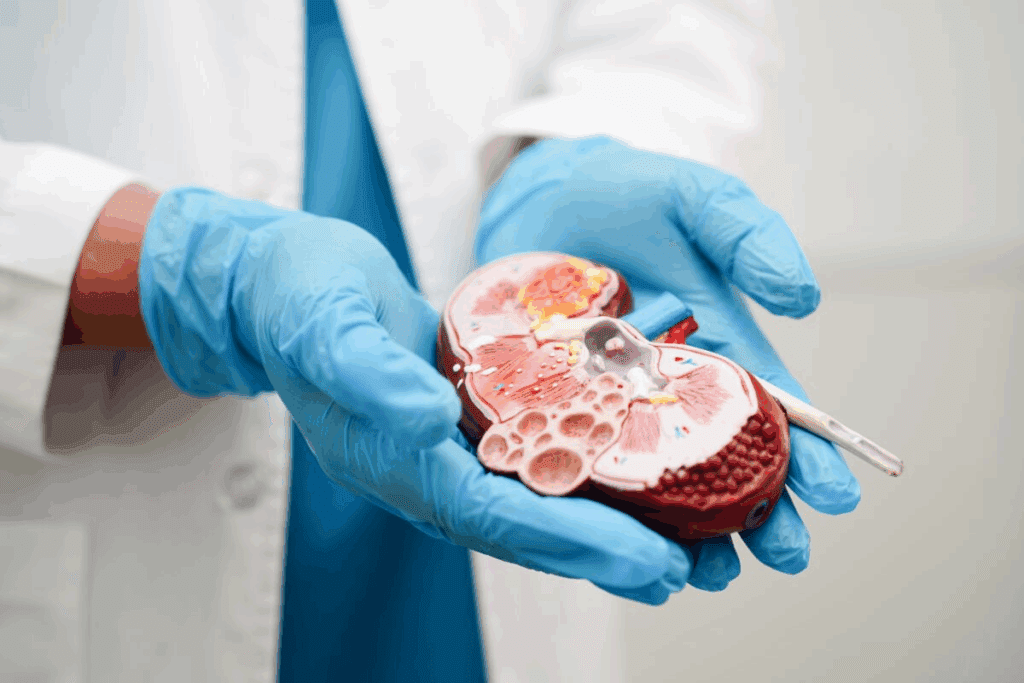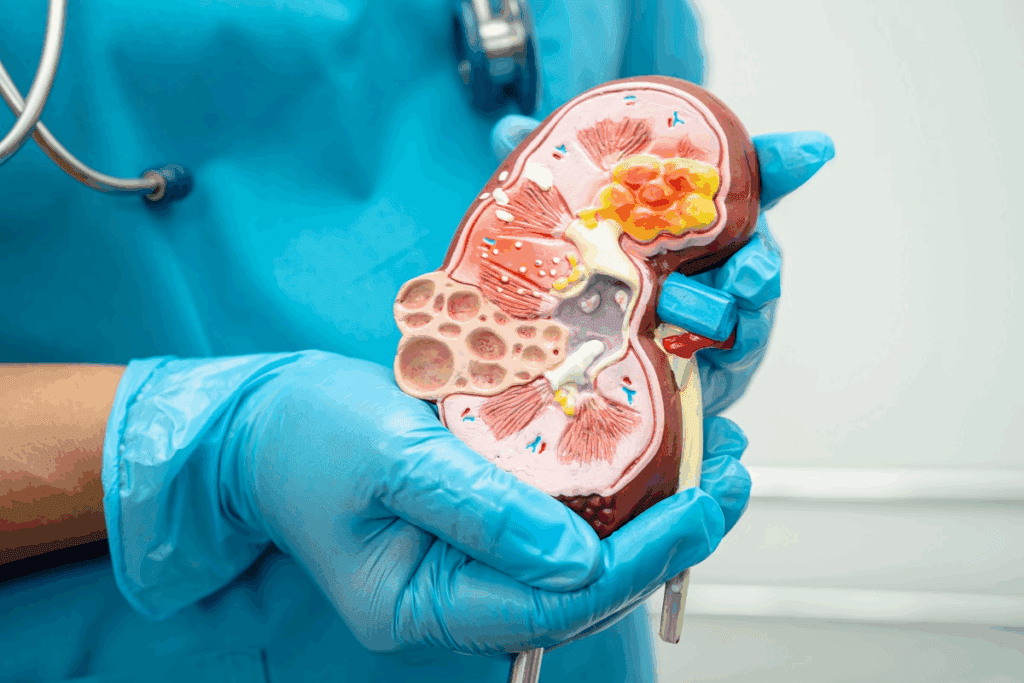Last Updated on November 25, 2025 by Ugurkan Demir

Learn how to use wave therapy for ED with complete instructions and benefits.
Erectile dysfunction (ED) is a common issue that affects millions of men globally. It greatly impacts their quality of life. At Liv Hospital, we understand the challenges of ED and the importance of effective treatment options. Recent studies have shown that low-intensity shockwave therapy (LiSWT) can be an effective treatment for ED. It offers a non-invasive solution.
We are committed to providing complete care by combining advanced technology with a patient-centered approach. Our expert medical professionals use internationally recognized shockwave therapy protocols. These are backed by the latest clinical research. In this guide, we will explore the benefits of wave therapy for ED and how it works. We aim to give you a thorough understanding of this innovative treatment.

Erectile dysfunction (ED) is a common issue that affects many men worldwide. It impacts their sexual health and overall well-being. It’s important to understand all aspects of this condition.
Erectile dysfunction is when a man can’t get or keep an erection for sex. It’s more common in men over 40. About 40% of men at 40 have ED, and this number goes up with age.
By 2025, ED will affect 322 million men globally. This shows how widespread the issue is. Knowing these numbers helps doctors and patients tackle the problem better.
ED often comes from a mix of factors, not just one thing. Heart disease, diabetes, high blood pressure, being overweight, and smoking are common causes. A sedentary lifestyle and too much alcohol also play a part.
Stress, anxiety, and depression can also cause ED. Knowing what causes it helps doctors find the right treatment.
| Risk Factor | Description | Impact on ED |
| Cardiovascular Disease | Conditions affecting the heart and blood vessels | High |
| Diabetes | Chronic condition affecting blood sugar levels | High |
| Hypertension | High blood pressure | Moderate |
| Obesity | Excess body fat | Moderate |
| Smoking | Tobacco use | High |
ED affects both physical and mental health. It can signal other health problems that need attention. It can also lead to low self-esteem, anxiety, and depression.
Understanding ED’s wide-ranging effects is key to treating it fully. Treatment should cover both physical and mental sides to improve a man’s life.

Wave therapy, also known as acoustic wave therapy, is a non-invasive treatment. It boosts blood flow and helps grow new tissue in the penis. This innovative method is being explored as a new way to treat erectile dysfunction (ED).
Acoustic wave therapy, also called low-intensity extracorporeal shockwave therapy (Li-ESWT), uses sound waves. These waves help improve blood flow and fix damaged tissue. It was first used to treat kidney stones but now helps with ED too.
Key aspects of acoustic wave therapy include:
Extracorporeal shockwave therapy (ESWT) started with treating kidney stones. It has grown to help with other health issues, like bone and urological problems. Now, it’s used in a low-intensity form to treat ED.
The progression of ESWT technology has enabled:
Wave therapy for ED is different from usual treatments like pills and surgery. Traditional methods mainly focus on symptom relief. Wave therapy, on the other hand, works to fix the root causes of ED by improving blood flow and tissue health.
| Treatment Aspect | Wave Therapy | Traditional Treatments |
| Non-Invasiveness | Yes | Varies (e.g., oral meds are non-invasive, surgery is invasive) |
| Treatment Focus | Addressing underlying causes | Managing symptoms |
| Side Effects | Minimal | Varies (e.g., oral meds can have side effects, surgery carries risks) |
Healthcare providers now offer a non-invasive solution for erectile dysfunction with acoustic wave therapy. This method has gained attention for its ability to improve erectile function.
Acoustic wave therapy works by applying mechanical stress to penile tissues. This stress triggers a series of cellular responses that boost erectile function. It also releases growth factors, essential for tissue repair and growth.
The therapy promotes the creation of new blood vessels through neovascularization. This is vital for healthy blood flow to the penis, helping to achieve and maintain an erection.
Neovascularization is key to how acoustic wave therapy works. It grows new blood vessels, addressing a major cause of erectile dysfunction: poor blood flow. Studies show that more blood vessels lead to better erectile function, as they improve oxygen and nutrient delivery to the penis.
Acoustic wave therapy also boosts cellular regeneration and tissue repair. The release of growth factors and the cellular responses help heal damaged tissue. This healing is essential for restoring normal erectile function.
The therapy’s benefits include neovascularization, better blood flow, and tissue repair. As research expands, acoustic wave therapy is becoming a vital option for treating erectile dysfunction.
LiSWT is a new way to treat ED. It’s safe, works well, and has few side effects. This therapy fixes ED’s root causes without surgery or long-term meds.
LiSWT is non-invasive, unlike surgery. It doesn’t need cuts or implants, lowering risks. It’s done in a clinic, and you can go back to your day right after.
Key advantages of LiSWT include:
LiSWT has little downtime, so you can get back to your life fast. It also has few side effects, unlike pills that affect your whole body.
The benefits of reduced recovery time and minimal side effects make LiSWT a good choice. It’s safer than invasive treatments.
Studies show LiSWT can improve ED for a long time. It boosts blood flow to the penis, fixing ED’s causes. This leads to lasting benefits.
We think LiSWT’s chance for long-term gains is a big reason to try it. It can greatly improve your life by fixing ED for good.
Research has shown that ED shockwave treatment is a good option for men with erectile dysfunction. Studies have found that low-intensity shockwave therapy (LiSWT) helps improve erectile function. This is good news for men dealing with ED.
Meta-analyses have looked at many studies to see if LiSWT works for ED. They found that it does, with big improvements in erectile function. For example, a study in the Journal of Urology showed LiSWT made erectile function scores much better.
“The available evidence suggests that LiSWT is a safe and effective treatment for ED, with significant improvements in erectile function observed across multiple studies.”
Here’s a table that shows the results from important studies on LiSWT for ED.
| Study | Sample Size | IIEF Score Improvement |
| Study A | 100 | 5.2 ± 2.1 |
| Study B | 150 | 4.8 ± 1.9 |
| Study C | 120 | 6.1 ± 2.5 |
The International Index of Erectile Function (IIEF) is key for measuring ED and treatment success. Studies show LiSWT makes IIEF scores better, meaning better erectile function. These changes are big and real, improving men’s lives with ED.
Long-term studies are important to see if LiSWT’s benefits last. Recent research is promising, showing LiSWT’s effects last for a year or more. This means LiSWT could be a lasting fix for ED.
In conclusion, the evidence is clear: ED shockwave treatment is a good choice for treating erectile dysfunction. The results from meta-analyses, IIEF score improvements, and long-term studies all support LiSWT’s use in treating ED.
To see if wave therapy is for you, check your health and how bad your erectile dysfunction is. Wave therapy, or low-intensity shockwave therapy, is a non-invasive method. It’s shown to help men with certain types of ED.
Men with mild to moderate vasculogenic ED are best for wave therapy. Vasculogenic ED means poor blood flow to the penis. The therapy’s success depends on the ED cause, symptom severity, and overall health.
Key factors that influence the success of wave therapy include:
Some medical conditions can change how well wave therapy works. For example, men with severe ED, diabetes, or big vascular disease might not see as much improvement. Talking to your doctor about your health history is key to knowing how these conditions might affect your treatment.
| Medical Condition | Potential Impact on Wave Therapy |
| Diabetes | May reduce effectiveness due to associated vascular damage |
| Severe ED | Less likely to achieve significant improvement |
| Vascular Disease | Can limit the benefits of wave therapy |
If your condition might make wave therapy less effective, your doctor might suggest other options. These could be medicines, lifestyle changes, or other treatments made just for you.
Knowing your health and ED details helps you and your doctor decide if wave therapy is for you.
Before starting shock wave treatment for ED, finding a qualified provider is key. You also need to know what to expect during the initial consultation. This preparation helps you get the best care and makes the treatment more effective.
It’s important to find a healthcare provider with experience in shock wave therapy for ED. Look for someone with a good track record and up-to-date knowledge. Here are some steps to find the right provider:
Table: Criteria for Selecting a Qualified Provider
| Criteria | Description | Importance Level |
| Certification | Ensure the provider is certified to administer shock wave therapy. | High |
| Experience | Look for providers with extensive experience in treating ED with shock wave therapy. | High |
| Patient Reviews | Positive reviews can indicate a provider’s competence and patient care quality. | Medium |
At your first consultation, the provider will check if shock wave treatment is right for you. They will review your medical history, talk about your ED symptoms, and might do some tests to find the cause.
Before your first treatment, you’ll get specific instructions. You might need to avoid certain medications or not eat a big meal beforehand. These steps help ensure your safety and the treatment’s success.
Following these instructions carefully is important for a smooth treatment. It’s also key to talk openly with your provider about any questions or concerns you have.
We’ll guide you through what to expect during your ED Shock Wave Therapy session. This treatment is non-invasive and quick, with little discomfort.
You’ll have a consultation with your healthcare provider before treatment. They’ll discuss your medical history and ED severity. You’ll also talk about any concerns.
Follow any pre-treatment instructions given. This might mean avoiding certain medications or substances.
On treatment day, arrive a few minutes early. The treatment area is private and comfortable, ensuring your dignity.
The ED Shock Wave Therapy procedure involves several steps:
You might feel a slight sensation of the shock waves, but it’s generally not painful. The entire process usually takes about 15-20 minutes per session.
After treatment, you can usually go back to your normal activities right away. You might see some mild redness or swelling, but it should go away in a few hours.
Your healthcare provider will give you specific post-treatment instructions. This may include follow-up appointments and possibly more sessions.
It’s important to follow these instructions carefully. This will help you get the best results from your ED Shock Wave Therapy.
The success of shock wave therapy for ED depends on the right treatment protocols and technical parameters. Knowing these details is key to getting the most benefits and avoiding side effects.
Energy density is a key technical parameter, set at 0.09 mJ/mm². This level is chosen for its ability to help cells grow without harming the tissue. The pulse rate, between 1500 to 2000 pulses per session, also plays a big role in how well the treatment works.
Experts say, “The right energy density and pulse rates are essential for shock wave therapy to be effective.”
“The therapeutic effect of low-intensity extracorporeal shock wave therapy is closely related to the energy density and the number of pulses applied during treatment.”
| Treatment Parameter | Typical Value | Significance |
| Energy Density | 0.09 mJ/mm² | Stimulates neovascularization and tissue repair |
| Pulse Rate | 1500-2000 pulses/session | Enhances treatment efficacy and promotes healing |
| Session Frequency | 1-2 sessions/week | Allows for optimal recovery and treatment response |
How often and how long shock wave therapy sessions are is very important. Sessions are usually once or twice a week, lasting several minutes. The whole treatment takes several weeks, with breaks in between for recovery.
Optimal treatment protocols find the right balance between sessions and rest. Studies show that 6 to 12 sessions, spaced right, can greatly improve erectile function.
The whole treatment for ED with shock wave therapy takes a few weeks. The number of sessions varies based on how well the treatment works. It’s important to check in after sessions to adjust the treatment and see how well it’s working.
By understanding and fine-tuning technical parameters and treatment protocols, doctors can make shock wave therapy for ED more effective. This leads to better results for patients.
ESWT treatment for erectile dysfunction is effective but comes with costs and insurance issues. It’s key to know the financial side of this treatment. We’ll look at what affects the cost and insurance coverage.
The cost of ESWT treatment for ED varies in the U.S. A single session can cost between $200 and $500. A full treatment course, needing multiple sessions, can increase the cost. Patients should talk to their healthcare provider for a more accurate cost estimate.
Insurance for ESWT treatment for ED is limited. Many insurance companies see it as an elective or investigational procedure. Patients should check with their insurance to see what’s covered. Sometimes, insurance may cover part of the treatment or related tests.
Healthcare providers often offer financing options or payment plans for ESWT treatment. These plans can help spread the cost over time. It’s important for patients to discuss these options with their provider to find a plan that fits their budget.
In summary, while ESWT treatment for ED can be pricey, understanding the costs and available financing can help patients make better choices.
Wave therapy is a big step forward in treating erectile dysfunction (ED). It’s a non-invasive method with few side effects. Men with ED can see big improvements in their ability to get an erection thanks to low-intensity shockwave therapy.
This therapy has many benefits. It boosts blood flow to the penis, which is key for getting and keeping an erection. It also helps repair and grow new cells, tackling the root causes of ED. This makes it a better choice than some older treatments.
Research backs up the success of shockwave therapy for ED. Many studies show it greatly improves erectile function. Plus, it’s non-invasive, so men can get back to their daily life quickly after treatment.
If you’re looking into treatments for ED, wave therapy is worth checking out. We suggest talking to a healthcare expert to see if it’s a good fit for you.
Wave therapy for ED, also known as low-intensity shockwave therapy (LiSWT) or acoustic wave therapy, is a non-invasive treatment. It uses shockwaves to stimulate the growth of new blood vessels. This helps improve erectile function.
Acoustic wave therapy promotes neovascularization, which means it helps grow new blood vessels. It also enhances blood flow and stimulates cellular regeneration in penile tissue. This leads to better erectile function.
Yes, many clinical studies and meta-analyses have shown that shockwave therapy is effective for ED. It leads to significant improvements in erectile function and International Index of Erectile Function (IIEF) scores.
LiSWT is non-invasive, has minimal recovery time, and can lead to long-term improvement in erectile function. It’s a good option for men who want to avoid surgery or medication.
Men with ED who haven’t responded to oral medications or prefer a non-invasive treatment are ideal candidates. Certain medical conditions may affect treatment outcomes. A qualified provider can assess your suitability.
During your first consultation, a qualified provider will assess your condition and discuss treatment options. They will also provide pre-treatment instructions. The treatment involves applying shockwaves to the penile tissue. You’ll receive guidance on post-treatment care.
The number of sessions needed can vary. Typically, a treatment course involves multiple sessions. The frequency and duration are determined by a healthcare professional based on individual needs.
The cost of ESWT treatment varies based on location, provider, and number of sessions. In the United States, treatment costs can range significantly. Insurance coverage is limited, but financing options or payment plans may be available.
Insurance coverage for ESWT treatment for ED is currently limited. It’s often considered an out-of-pocket expense. It’s important to check with your insurance provider for the most up-to-date information on coverage.
Shockwave therapy is generally well-tolerated, with minimal side effects reported. Some men may experience temporary discomfort or bruising. These effects usually resolve on their own.
Certain medical conditions, including a pacemaker or other implants, may affect your eligibility for ESWT. It’s important to discuss your medical history with a qualified provider to determine the best course of treatment.
The effects of LiSWT can last up to two years or more after treatment. Maintenance sessions may be recommended to optimize long-term results.
National Center for Biotechnology Information. (2025). How to Use Wave Therapy for ED Complete. Retrieved from https://pmc.ncbi.nlm.nih.gov/articles/PMC9995960/
National Center for Biotechnology Information. (2025). How to Use Wave Therapy for ED Complete. Retrieved from https://pubmed.ncbi.nlm.nih.gov/22146131/
Subscribe to our e-newsletter to stay informed about the latest innovations in the world of health and exclusive offers!